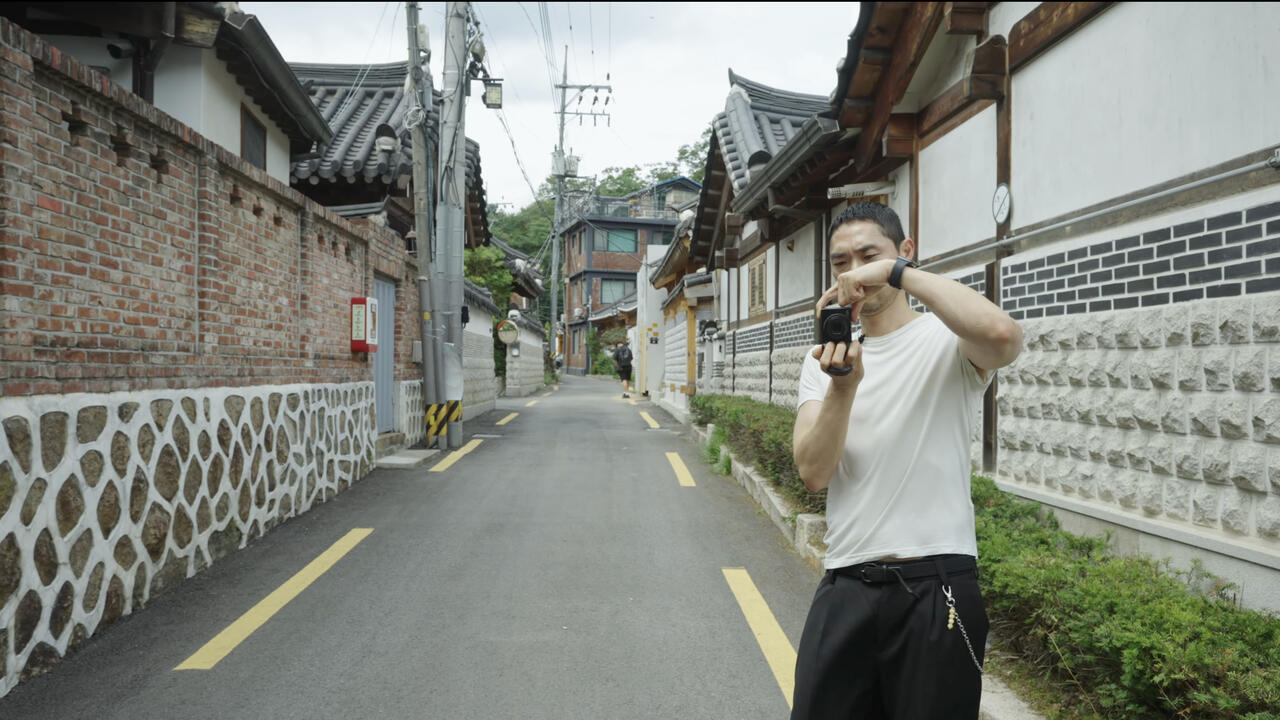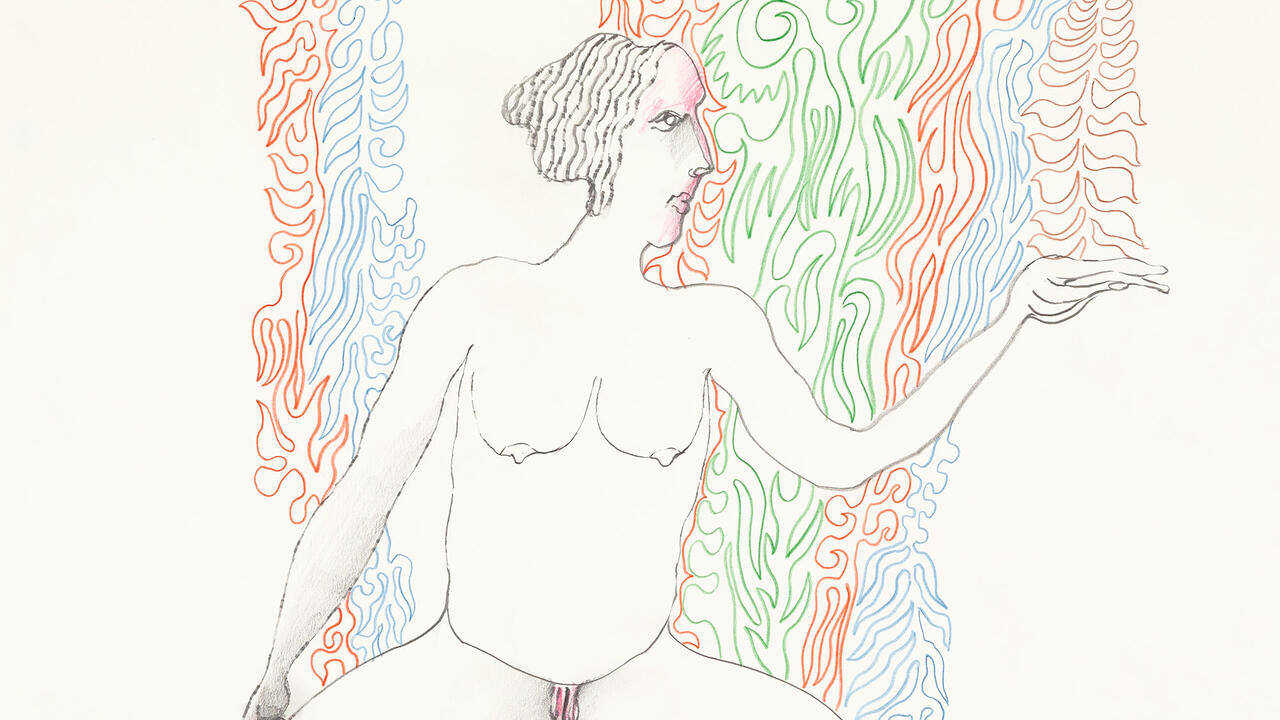The Big Issue
Thomas Hirschhorn
Thomas Hirschhorn
With its four white walls and uplit ceiling, Frankfurt's Portikus is the archetypal neutral art space - a classic white cube. One response to the space for an artist could be to produce one large artwork, and at first glance, this is precisely what Thomas Hirschhorn set out to do last October, entitling his exhibition 'One Artwork: One Problem'. But what the visitor was actually confronted with was an enormous proliferation of problems, each with a piece of sculpture attached: the Gulf War; the Palestine problem; the Kosovo conflict; environmental pollution; unemployment; being overweight. These, along with 15 other more-or-less 'global' issues were presented in the form of reports from newspapers and magazines mounted on plain plywood screens.
Hirschhorn's selection suggested an empirical study of the subjects currently favoured by the mass media. Of course, these problems, which are habitually stereotyped with a half-hearted show of grief, are the main justification for the media's very existence. (What would they write about if there were only one problem? Would it be art?) At Portikus, the screens were so jam-packed that one could not even pretend to take it all in. The world's problems would inevitably be too much for anyone who tried to think about them all (or even several of them) at once, beyond the level of conscience-easing acknowledgement. And in Frankfurt, these problems blew the walls of the ideal exhibition space to bits.
Hirschhorn had two side wings grafted on to the gallery's structure, thus radically extending the space. A fragile timber construction was placed on a base of wooden beams, themselves joined together in an apparently haphazard, but ultimately stable fashion - rather like primitive stilt-dwellings. The walls were made of semi-transparent plastic sheeting, with large Perspex windows. Because the exhibition's lights were not switched off at night, the exhibition permeated its surroundings, sending bright signals into the winter darkness 24 hours a day.
So Hirschhorn presented the problems of the world breaking out of the art showcase, but this should not simply be perceived as a plea for the relevance of politics in art. Certainly Hirschhorn is an artist who is concerned about his present; as he once bluntly put it: 'I think that more is more and less is always less. More money is more money. Less success is less success. More unemployed are more. Less factories are less. I think very economically'. The exhibition's focus on the media suggests the artist's fundamental concern is with gestures of power and powerlessness in the politics of representation.
Hirschhorn's decision to expand his work into veranda-like extensions, illuminated through the night, is a visual statement of autonomy in an art world that stops short of presenting its content as accessibly as the consumer culture it embraces in so many other respects. 'I wanted to show my work like in a shop window, with 24 hour visibility', he noted in 1995 about a construction that similarly enhanced the Crédit Lyonnais in Bordeaux. Hirschhorn's previous works have often used the same metaphor, through the use of mobile, market stall-like 'buffets'; by building whole new rooms within the exhibition space; and by creating temporary architectural constructions in public spaces - such as his piece for the 1997 Münster Sculpture Project. Often he works outside the gallery, building shrines and planting them on the walls of art institutions. It seems logical that these pathetic memorials are dedicated to writers such as Thomas Bernhard or Ingeborg Bachmann (in last year's 'Make Way for the Mediterranean' exhibition in Zürich) or artists such as Nazi-victim Otto Freundlich (in his piece at the recent Berlin Biennale): even dead artists can petition the institutions that for so long failed to acknowledge them.
This reading is supported by Hirschhorn's latest exhibition at Berlin's Arndt & Partner gallery. In an installation based on the legendary 'Amber Room' - a furnished room given as a present by Prussian king Friedrich Wilhelm I to Tsar Peter the Great in 1717, and mysteriously lost during the Second World War - we find one of Bachmann's poems. Initially, it seems to be about soldiers and war, but lines like 'the uniform of the day is patience' and 'the decoration with shabby stars ... awarded for bravery amongst friends' could well relate to the stamina all artists must acquire. Hirschhorn's recreation of the amber room is an amusingly poor, yet labour-intensive, cardboard replica. His interpretation of the mosaic representing the four seasons is presented behind glass, as if recently found and presented in a museum for the first time, and his versions of insects preserved in amber are egg-shaped packages of transparent foil and tape, containing representations from the real world - pieces of news about the recent crisis in Iraq, or bits of fashion advertising with the words 'Klein' or 'Boss' scribbled endlessly in ball-point pen. This work is about the way artists try to deal with the modern world, even if only by repeating its language, and about how artists get entangled with the stereotypical monstrosities this world produces. An article encapsulated within one of the 'amber' enclosures emphasises this. It describes how the painter Emil Nolde thought it was opportune to go with the nationalist flow in pre-Nazi Germany. Political power may glitter on the surface of the amber, but the artistic question is enclosed within.
Hirschhorn's Frankfurt exhibition, similarly, is not simply about 'the political' as a generalised abstraction. It addresses the problem of art. The title, 'One Artwork, One Problem', refers to the fact that each of the 'problems' is linked to a 'sculpture' via a network of veins made of aluminium foil. The aesthetic of these cardboard forms (tightly covered with blue bin-bags) is suspiciously reminiscent of the public sculptures that populate parks and pedestrian areas all over postwar Europe. These were intended to honour democracy, rediscover pride, or express guilt-ridden dismay - whichever was appropriate. Hirschhorn's parodies seem to feed on the 'problems' through their foil extensions, as if through umbilical cords. The work of art as a vessel for all the thoughts we can't deal with? Despite appearances, Hirschhorn presents a precise proposition: that art is, and always has been, about one problem - art. And this is quite enough; like the contents of a piece of amber, there is a whole world in there.
Translated by Michael Robinson

















